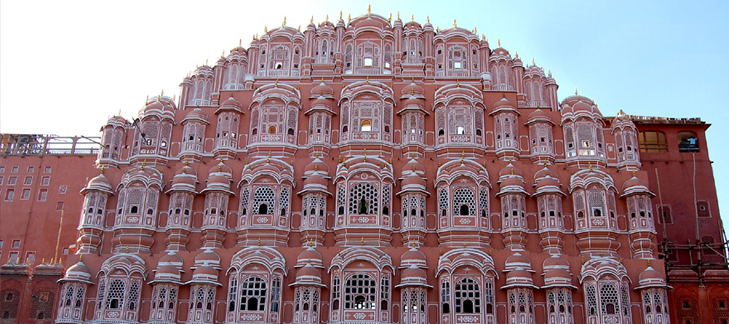Hawa Mahal, Jaipur Travel Information
Hawa Mahal, meaning Palace of the Breeze, was built in 1799 by Maharaja Sawai Pratap Singh, and designed by Lal Chand Usta in the form of the crown of Krishna, the Hindu god. Its unique five-story exterior is also akin to the honeycomb of a beehive, with its 953 small windows called jharokhas that are decorated with intricate latticework. The original intention of the lattice was to allow royal ladies to observe everyday life in the street below without being seen, since they had to observe strict purdah (face cover). Built of red and pink sandstone, the palace is situated on the main thoroughfare in the heart of Jaipur’s business centre. It forms part of the City Palace, and extends to the Zenana or women's chambers, the chambers of the harem. It is particularly striking when viewed early in the morning, lit with the golden light of sunrise.
Its cultural and architectural heritage is a true reflection of a fusion of Hindu Rajput architecture and the Islamic Mughal architecture; the Rajput style is seen in the form of domed canopies, fluted pillars, lotus and floral patterns, and the Islamic style is evident in its stone inlay filigree work and arches (as distinguished from its similarity with the Panch Mahal - the palace of winds - at Fatehpur Sikri). The entry to the Hawa Mahal from the city palace side is through an imperial door. It opens into a large courtyard, which has double storied buildings on three sides, with the Hawa Mahal enclosing it on the east side. An archaeological museum is also housed in this courtyard. Hawa Mahal was Maharaja Jai Singh favorite resort because of the elegance and built-in interior of the Mahal. The cooling effect in the chambers, provided by the breeze passing through the small windows of the facade, was enhanced by the fountains provided at the center of each of the chambers.

View All Sights of Jaipur
Sights Main Menu >>

